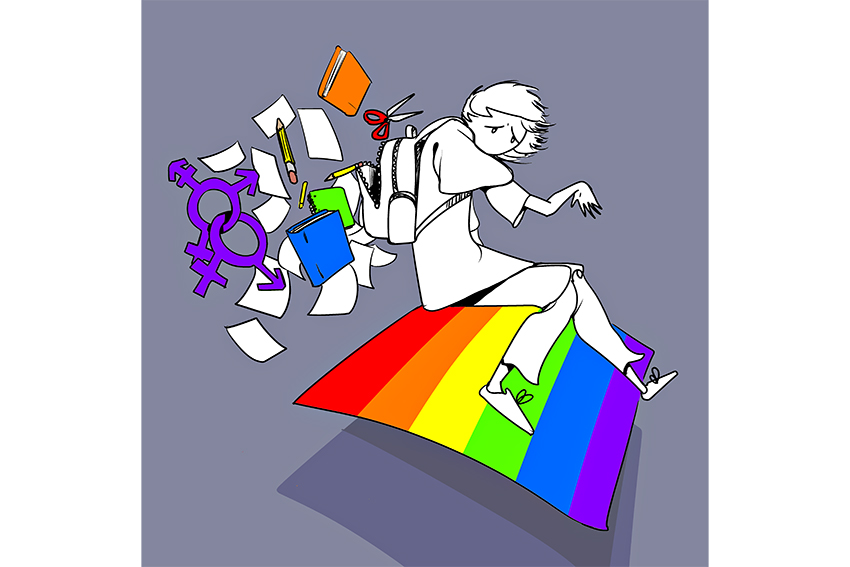A recent UT study found LGBTQ adolescents are disproportionately represented in foster care and unstable housing, such as shelters or transitional facilities, compared with their heterosexual counterparts.
Lesbian, gay and bisexual adolescents are twice as likely, and transgender adolescents three or four times more likely, to be in foster care, said Stephen Russell, senior author of the study and chair of the Human Development and Family Sciences department.
The study also found LGBTQ youth in unstable housing reported poorer school functioning, higher substance use and poorer mental health compared with both heterosexual youth and LGBTQ youth in stable housing, said Laura Baams, co author of the study.
For Russell, the study is personal because he is the father of a gay foster child.
“This is the first time to show that using population data that the intersection is even more vulnerable,” Russell said. “Being queer and in the system or in foster care is especially associated with vulnerability.”
Russell said only 12 percent of American adolescents identify as LGBTQ. However, LGBTQ adolescents make up 30.4 percent of children in the foster care system, said Bianca Wilson, co-author of the study. The reasons for this disproportion are unclear and need further research, Wilson said.
“We need to start examining whether LGBTQ youth are more likely to be removed from their families of origin, or whether they are more likely to get ‘stuck’ in the system by not getting permanent placements, or both,” said Wilson, a public policy faculty member at UCLA School of Law.
Wilson said the study is also the first to show the added impacts of being a racial minority in foster care and unstable housing. They found LGBTQ African-Americans had a pattern of poorer outcomes compared with LGBTQ non-Hispanic white students in the same situation, Wilson said.
The study examined over 600,000 students in California, focusing on the intersection of sexual gender, minority status and housing status.
“California is a state with protections for LGBTQ youth and training for foster care agencies and parents, and yet we still see these disparities,” said Baams, a professor at the University of Groningen in the Netherlands. “Disparities might, therefore, be even larger in other states.”
As one of the 37 states without nondiscrimination laws in child welfare, Texas may likely have magnified disparities, Russell said. Nondiscrimination laws protect everyone in the foster care system, including the kids, the potential foster parents and the employees, from being discriminated against for being LGBTQ.
“I think this is an example where those structural inequalities show up in the life of individual kids and really are evident in the disparities we see from them,” Russell said.
Baams said the current welfare system is not equipped to adequately care for or protect minority youth.
“It is necessary to provide and improve training for both foster care agencies and foster parents and improve the matching of youth with families in which their identities are affirmed,” Baams said.





















